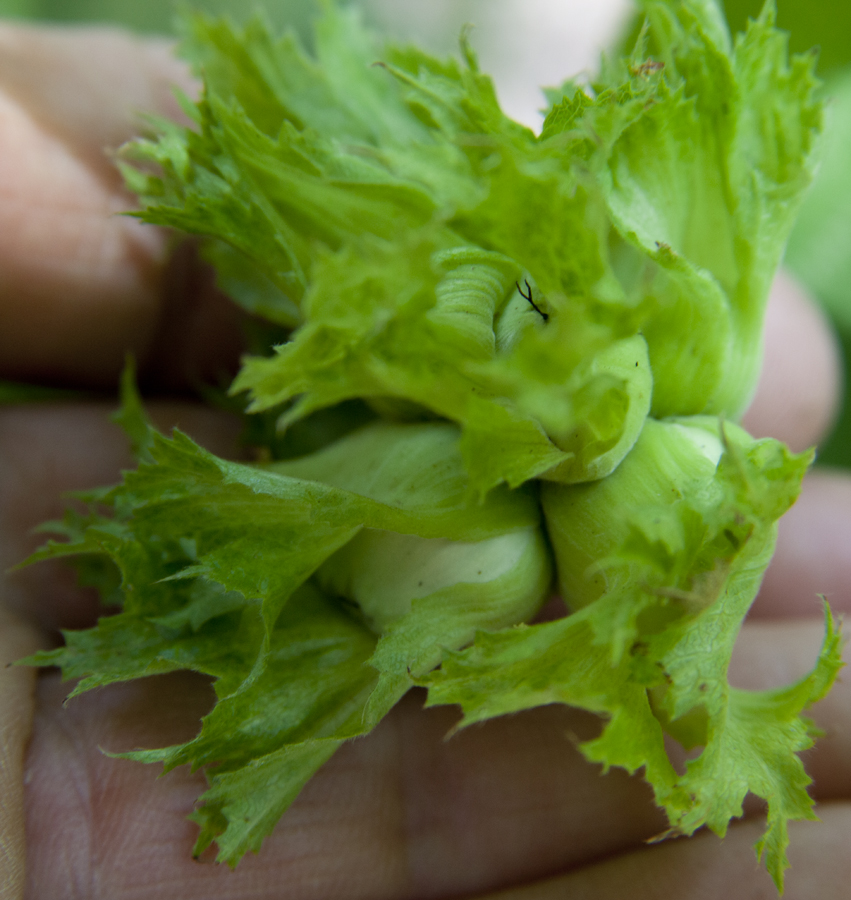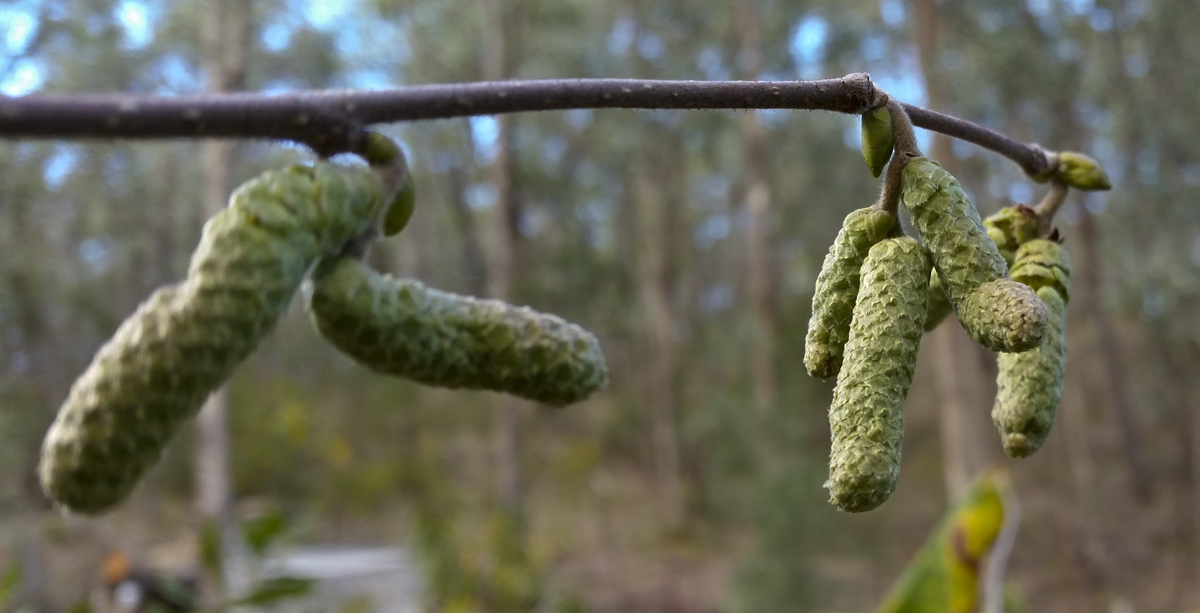"The process
of photosynthesis is like a fine, critical thread that invisibly suspends
all our food and the dining experience before us". Lloyd Godman
2005
St Andrews
Garden, Victoria Australia
Hazelnut trees
there are two Hazelnut trees in the St Andrews Orchard - Planted in the winter of 2005

First Hazel nut flowers July 2012
About 6 of these trees were first planted on the north faing slope of the orchard - however it was very difficult to keep them alive and by the winter of 2008 there were only 2 alive - these were moved to the south facing slope and swales were created in front of each tree to retain the water - Here they have grown much better
Establishing the tree is one thing, protecting it against wildlife is quite another - the tree is surrounded by wire netting supported by star pickets to stop attack from wallabies who eat the leaves. The netting runs to the ground to stop rabbits who might ring bark the tree.
When in fruit it is also covered with netting to prevent opossums and parrots who eat the fruit. The Star pickets also prevent large Kangaroos who frequent the orchard from bashing into the tree and breaking it down.
This tree was completely eaten down by Wombats in Feb 2005

I found these strange lettuce like growths on the Hazel nut tree - I thought the plant had gone loopy - with closer inspection I suddenly realized these were not strange leaves, in fact it had formed its first nuts. - Dec 2012

Male catkins (male flowers) May 2015
Unlike other fruiting trees, the hazelnut tree blooms and pollinates in the middle of winter. Wind carries the pollen from catkins (male flowers) to small red female flowers, where pollination occurs. The flowers remain inactive until spring, when fertilisation completes and the nuts begin to develop.
|